




When it comes to doing laundry, using fabric softener and vinegar together in the washing machine is a common and debated topic. While both substances can provide benefits to your laundry routine, it is important to use them properly to avoid any unwanted effects.
Fabric softener is a product that is typically added to the final rinse cycle or dryer to make clothes feel softer, reduce static cling, and add a pleasant scent. It helps to make fabrics more comfortable to wear and easier to iron. However, using fabric softener incorrectly or using too much can leave a residue on your clothes, make them less absorbent, and even cause skin irritation in some individuals.
Vinegar, on the other hand, is a natural household ingredient that can also be used in the laundry. It has various benefits, such as removing odors, brightening colors, and softening towels. Vinegar can also help to remove soap residue from laundry, making clothes feel cleaner and fresher. However, using too much vinegar or combining it with certain detergents can result in a strong odor or cause damage to certain fabrics.
When it comes to using fabric softener and vinegar together in the washing machine, there are some do’s and don’ts to keep in mind. Firstly, it is important to follow the manufacturer’s instructions for both products and use the recommended amount. This will help to ensure that you are using them correctly and avoiding any potential negative effects.
It is also important to consider the type of fabrics you are washing. Fabric softener may be suitable for most fabrics, but it is not recommended for certain materials like microfiber or workout clothes, as it can reduce their absorbency or interfere with their moisture-wicking properties. On the other hand, vinegar is generally safe to use on most fabrics, but it is best to avoid using it on delicate or silk items, as it can cause damage or discoloration.
Overall, using fabric softener and vinegar together in the washing machine can be an effective way to achieve softer, fresher laundry. Just be sure to use them properly, in the right amounts, and on suitable fabrics to avoid any potential issues. With the right approach, you can enjoy the benefits of both products and keep your clothes looking and feeling their best.
Why Use Fabric Softener and Vinegar in the Washing Machine?
There are several reasons why using fabric softener and vinegar together in the washing machine can be beneficial:
1. Softens Clothes
Fabric softeners are designed to make clothes feel soft and smooth. They work by coating the fibers of the fabric, reducing friction and static electricity. This can help prevent clothes from becoming stiff and uncomfortable after washing.
2. Reduces Wrinkles
Using fabric softener in the washing machine can help minimize wrinkles in your clothes. The softening agents in the fabric softener make the fabric more pliable, allowing it to be easily smoothed out during the drying process.
3. Improves Absorbency
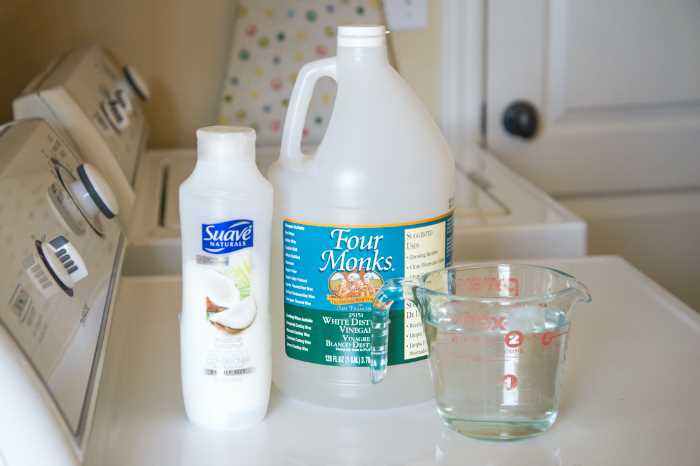
Vinegar is known for its ability to remove residue and build-up from fabrics. Adding vinegar to the wash cycle can help remove soap residue and mineral deposits from the fabric, which can improve absorbency. This can be particularly useful for towels, dishcloths, and other items that need to absorb moisture effectively.
4. Removes Odors
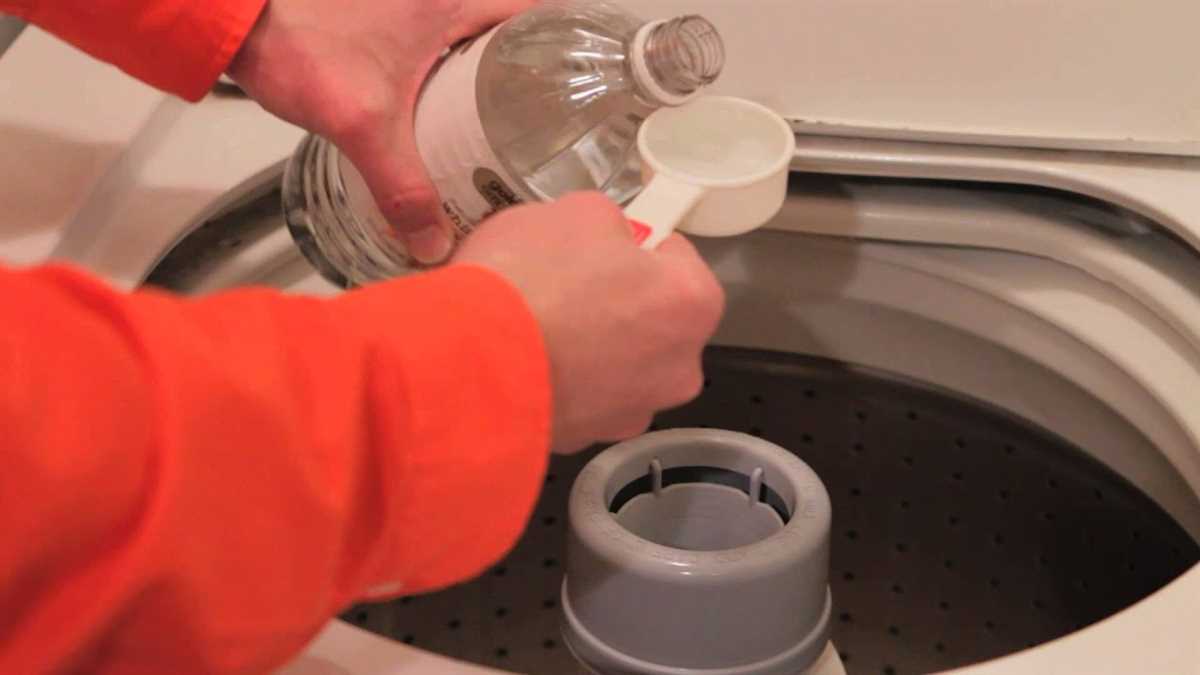
Vinegar has natural deodorizing properties and can help eliminate unpleasant odors from clothes. It can effectively neutralize odors from sweat, mildew, and smoke, leaving your clothes smelling fresh and clean.
5. Environmentally Friendly
Using fabric softener and vinegar in the washing machine can be a more environmentally friendly option compared to commercial fabric softeners. Vinegar is a natural product that is biodegradable, non-toxic, and safe for the environment. Additionally, using vinegar can help reduce the need for harsh chemicals and detergents.
| Fabric Softener | Vinegar |
|---|---|
| Softens clothes | Improves absorbency |
| Reduces wrinkles | Removes odors |
| Environmentally friendly |
In conclusion, using fabric softener and vinegar together in the washing machine can have several benefits for your clothes and the environment. It can make your clothes softer, reduce wrinkles, improve absorbency, remove odors, and be a more environmentally friendly option. However, it’s important to follow the do’s and don’ts to ensure the proper use of fabric softener and vinegar in your washing machine.
Benefits of Using Fabric Softener and Vinegar Together
1. Softens Fabric
One of the main benefits of using fabric softener and vinegar together in the washing machine is that it helps to soften your clothes. Fabric softener works by coating the fibers in your clothes with a lubricating layer, making them feel softer and reducing static cling. Vinegar, on the other hand, helps to break down mineral deposits and residue that can make clothes feel stiff or rough.
2. Reduces Static Cling
Static cling can be a frustrating problem, especially during the colder months. By using fabric softener and vinegar together, you can effectively reduce static cling in your clothes. The fabric softener helps to neutralize any static charge, while the vinegar helps to remove any residues that may be contributing to the problem.
3. Improves Absorbency
If you use fabric softener and vinegar in your laundry routine, you may notice that your towels and other absorbent fabrics become more effective at soaking up water. The fabric softener helps to improve the absorbency of the fabric by keeping the fibers pliable and open, while the vinegar helps to remove any residue that may hinder absorbency.
4. Removes Odors
Vinegar is known for its odor-eliminating properties, and when used in conjunction with fabric softener, it can help to remove unpleasant smells from your clothes. Vinegar acts as a natural deodorizer, neutralizing any odors that may be lingering on your garments.
5. Gentle on Clothes
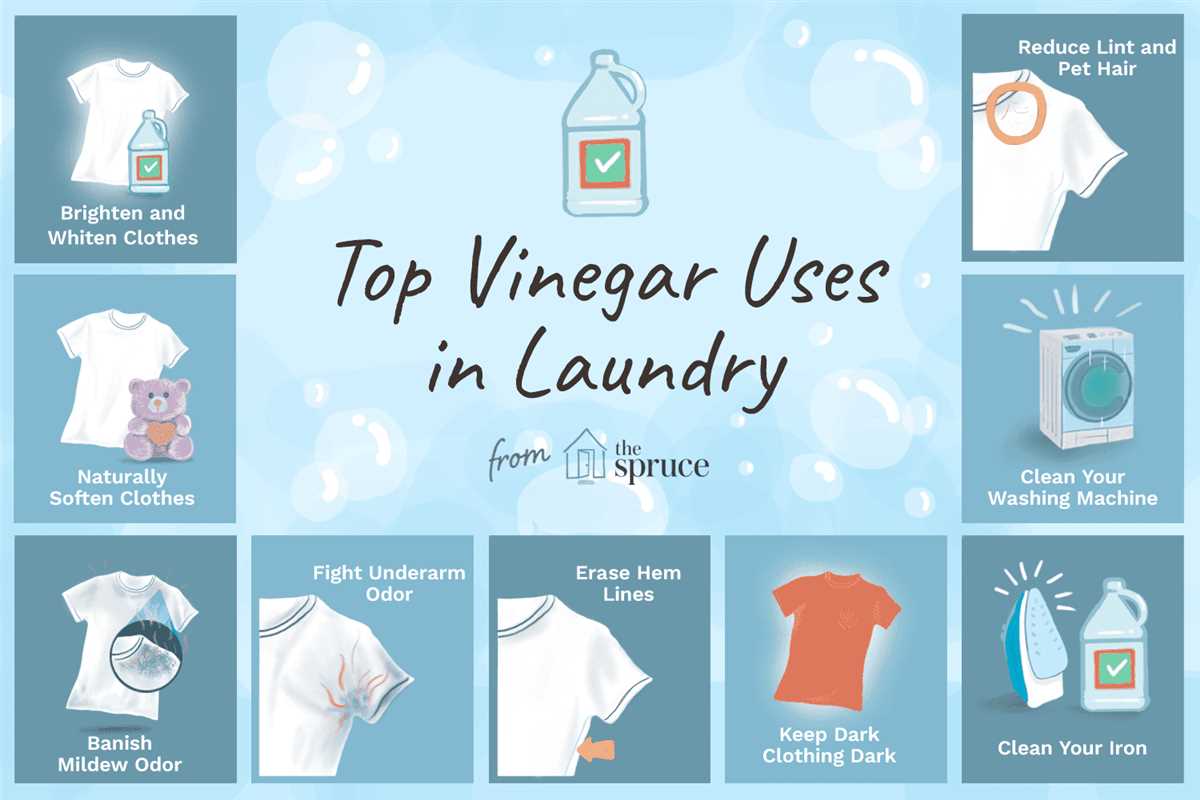
Both fabric softener and vinegar are gentle on fabrics, making them suitable for use on a wide range of clothing items. They can help to protect the fibers from damage and keep your clothes looking and feeling their best.
6. Cost-Effective
Using fabric softener and vinegar together can also be a cost-effective laundry solution. Fabric softener is relatively inexpensive, and vinegar is a budget-friendly alternative to more expensive laundry additives. By combining the two, you can achieve the same softening and freshening effects as more expensive products.
| Do’s | Don’ts |
|---|---|
|
|
How to Use Fabric Softener and Vinegar in the Washing Machine
Using fabric softener and vinegar in the washing machine can provide several benefits. Not only can it help soften your clothes and make them smell fresh, but it can also help remove build-up, eliminate odors, and reduce static cling. However, it’s important to follow proper dosing and to avoid certain combinations. Here are some dos and don’ts to consider when using fabric softener and vinegar together in the washing machine.
Do’s:

- Dilute the vinegar: Before adding vinegar to your washing machine, make sure to dilute it with water. This will help prevent any potential damage to the machine or your clothes. A common ratio is one cup of vinegar to one cup of water.
- Add fabric softener to the dispenser: If your washing machine has a fabric softener dispenser, you can add the fabric softener as usual. Follow the manufacturer’s instructions for proper dosing.
- Use fabric softener balls or dryer sheets: If your washing machine doesn’t have a fabric softener dispenser, you can use fabric softener balls or dryer sheets. Simply add them to the machine before starting the wash cycle.
- Choose the right fabrics: Fabric softener works best on certain fabrics like cotton, linen, and bamboo. Always check the care instructions on your clothes to ensure they are compatible with fabric softener.
Don’ts:

- Combine fabric softener and vinegar together: Avoid mixing fabric softener and vinegar together in the same cycle. The combination can create a residue on your clothes and decrease the effectiveness of both products.
- Use too much fabric softener or vinegar: Using excessive amounts of fabric softener or vinegar can leave a residue on your clothes or cause damage to your washing machine. Follow the manufacturer’s instructions for proper dosing.
- Use fabric softener or vinegar on certain fabrics: Avoid using fabric softener or vinegar on delicate fabrics like silk or wool. These fabrics require special care and may be damaged by fabric softener or vinegar.
- Forget to clean your washing machine: Over time, fabric softener and vinegar can build up in your washing machine, leading to odours or clogs. Make sure to regularly clean your machine to prevent any issues.
By following these do’s and don’ts, you can effectively use fabric softener and vinegar in your washing machine to achieve soft, fresh-smelling clothes. Remember to always read the care instructions on your clothes and your washing machine manual for best results.
Common Mistakes to Avoid
- Not using the right vinegar: When using vinegar as a fabric softener, it’s important to use white distilled vinegar. Avoid using other types of vinegar such as apple cider vinegar or red wine vinegar, as they can leave stains on your clothes.
- Using too much fabric softener: Adding too much fabric softener can leave a residue on your clothes and make them feel greasy. Follow the recommended dosage on the fabric softener bottle, or use a measuring cup to ensure proper usage.
- Not diluting the vinegar: It’s crucial to dilute the vinegar before adding it to the washing machine. Undiluted vinegar can damage the fabric and cause discoloration. Mix one part vinegar with three parts water before adding it to the rinse cycle.
- Using fabric softener and vinegar together in the same cycle: While both fabric softener and vinegar can be used to soften clothes, it’s not recommended to use them together in the same wash cycle. The two substances can react and cancel each other out, reducing their effectiveness.
- Adding vinegar to the wrong cycle: Vinegar should be added during the rinse cycle to act as a fabric softener. Adding it during the wash cycle can interfere with the cleaning process and affect the performance of your detergent.
- Not measuring the vinegar properly: As mentioned earlier, it’s important to measure the vinegar correctly to avoid using too much or too little. Using too little vinegar may not provide enough softening benefits, while using too much can leave a strong vinegar smell on your clothes.
- Using vinegar on delicate fabrics: Vinegar is generally safe to use on most fabrics, but it’s always a good idea to check the care label of your garments before using it as a fabric softener. Delicate fabrics such as silk or wool may not react well to vinegar, so it’s best to avoid using it on these types of materials.
- Mixing fabric softener and vinegar directly: Some people might try to mix fabric softener and vinegar together before adding them to the washing machine. This is not recommended as it can create a chemical reaction and potentially damage your clothes or the washing machine itself.
By avoiding these common mistakes, you can effectively use fabric softener and vinegar in your washing machine to achieve softer and fresher-smelling clothes.
Alternative Uses for Fabric Softener and Vinegar
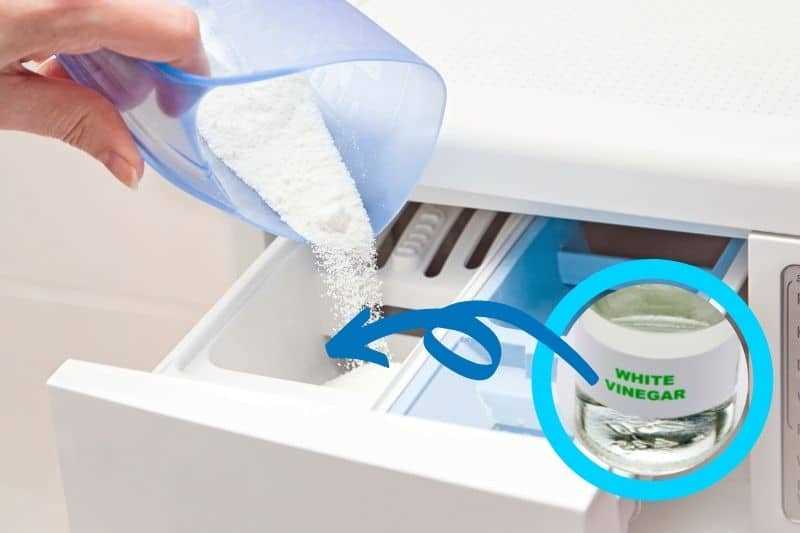
1. Removing Odors
Fabric softener and vinegar can be a useful combination for removing odors from various items in your home:
- Add a few tablespoons of fabric softener to a spray bottle filled with water and use it as an air freshener.
- Soak smelly clothes or linens in a mixture of water and fabric softener before washing them to remove stubborn odors.
- Mix equal parts vinegar and water in a bowl and place it in a room to eliminate unpleasant odors.
2. DIY Cleaning Solutions
You can create your own natural cleaning solutions using fabric softener and vinegar:
- Mix equal parts vinegar and water with a few drops of fabric softener to create a homemade all-purpose cleaner.
- Add fabric softener to warm water and use it to clean windows, mirrors, and other glass surfaces.
- Create a fabric softener and vinegar mixture to remove stains from upholstery and carpets.
3. Pest Control
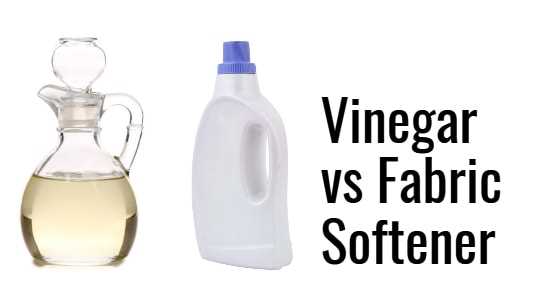
Believe it or not, fabric softener and vinegar can help with pest control:
- Mix equal parts vinegar and water in a spray bottle and use it as a natural insect repellent.
- Add a small amount of fabric softener to a bowl of water and leave it outside to keep mosquitoes away.
4. Freshening up Shoes
If your shoes need a bit of freshening up, fabric softener and vinegar can do the trick:
- Sprinkle a few drops of fabric softener onto a cloth and wipe the insides of your shoes to remove odors.
- Create a mixture of water, fabric softener, and vinegar and spray it inside your shoes to eliminate unpleasant smells.
5. Cleaning Jewelry
Fabric softener and vinegar can also be used to clean and restore the shine of your jewelry:
- Soak your jewelry in a mixture of equal parts water and fabric softener for a few minutes, then use a soft cloth to gently clean and buff the pieces.
- For stubborn tarnish, combine vinegar and a small amount of fabric softener in a bowl and soak your jewelry for a longer period of time before cleaning.
6. Repelling Pet Hair
If you have pets that shed, fabric softener and vinegar can help repel pet hair from surfaces:
- Mix equal parts vinegar and water in a spray bottle and lightly spritz furniture, carpets, and other areas prone to pet hair.
- Use a cloth dampened with fabric softener and vinegar to wipe down surfaces and make it easier to remove pet hair.
7. Removing Soap Scum
Fabric softener and vinegar can be used to remove soap scum from bathroom surfaces:
- Mix equal parts vinegar and water with a few drops of fabric softener to create a cleaning solution.
- Spray the mixture onto soap scum on shower walls, tubs, and sinks, then scrub with a brush or sponge.
- Rinse the surfaces thoroughly with water to remove any residue.
FAQ
Can I use fabric softener and vinegar together in the washing machine?
Yes, you can use fabric softener and vinegar together in the washing machine. However, it’s important to follow some do’s and don’ts to ensure the best results.
What are the benefits of using fabric softener and vinegar in the washing machine?
Using fabric softener helps to make your clothes feel soft, reduce static, and add a pleasant scent. Vinegar, on the other hand, helps to remove odors, brighten colors, and soften fabrics.
Should I add fabric softener and vinegar directly into the washing machine or in the designated compartments?
You can add fabric softener and vinegar directly into the washing machine during the rinse cycle, or you can use the designated compartments if your machine has them. However, make sure to check your machine’s manual for specific instructions.
What is the recommended amount of fabric softener and vinegar to use in a load of laundry?
The recommended amount of fabric softener and vinegar to use in a load of laundry depends on the size of the load and the concentration of the products. It’s best to follow the instructions on the product labels or start with a small amount and adjust as needed.
Are there any fabrics or types of clothing that I should not use fabric softener and vinegar on?
There are some fabrics, such as microfiber and waterproof materials, that should not be treated with fabric softener as it can reduce their functionality. It’s best to check the care instructions on your clothing and avoid using fabric softener and vinegar on fabrics that may be sensitive to these products.












